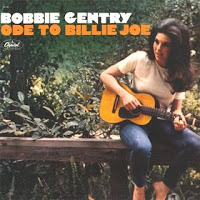My interest in anything Romanov occasionally borders with obsession so if there is a book about this subject,you can bet I will read it.
Found this one in local bookshop and of course had to buy it although at this point I am very familiar with the story,but here we have fresh files (unearthed from somewhere and sold on Sotheby's auction,presented as a gift to author),photos and less known characters.
It is a huge,occasionally very exhausting story that covers not only royal family and their inner circle but literally cast of thousands who one way or the other influenced the story,for example we have police file on everybody who has ever visited Rasputin's house,his visits to prostitutes,names of priests he clashed with,politicians who used him (and were used) and so on. Towards the end I must admit I started losing the count who is who and perhaps the book would have benefited from some serious editing but never mind,obviously the author was delighted with access to newly discovered files and I understand the pleasure of dealing with facts instead of second-guessing what actually happened. Hm,we are still talking about the "facts" but must admit these are documents that survived communism so who knows how distilled these "facts" actually are.
At the very first,I thought this might be (finally) a fresh look at character with incredibly bad reputation and something inside still tells me there is a possibility Rasputin's reputation was destroyed by his enemies. But soon it became clear this was not author's intention - Radzinsky is not interested in explanations of how and why,he is focused on messages,letters and interviews (in itself perhaps illusionary as we don't know for sure whom were they sent and what was the story behind it - letters signed with "Darling" could but don't have been sent by Empress,for example). Another thing is,Radzinsky is very one-sided: if he decides against certain character,he will write about him/her with disgust and clearly visible contempt (see Ana Vyrubova) no matter what documents say. Communists have released Vyrubova from prison because they simply couldn't find anything against her but Radzinsky still believes she was evil incarnated and never mind the documents. The fact that woman escaped certain death almost annoys him and reader can feel his irritation with the fact that she wasn't killed in some basement.
Lots of interesting pictures and research is well done,still the writing style could have been better (or should we say,more neutral) but apparently this is a subject where everybody gets one-sided and is difficult to stay calm. I am still waiting for realistic version of Rasputin and someone who will explain his behavior from different perspective,not only as a charlatan,mad monk and hypnotist. I refuse to believe he was evil and even the stories abut his drunken escapades and orgies don't make him less human (on contrary),in fact there was a certain childish innocence abut him specially when (for example) he would rush to visit friends who prepared beatings (or something similar nasty) for him,not even suspecting people hate him. I say,read between the lines. History is written by winners and you can bet media can turn any of us into mad monks,charlatans and whatnot if they lack understanding of what actually happened.



















